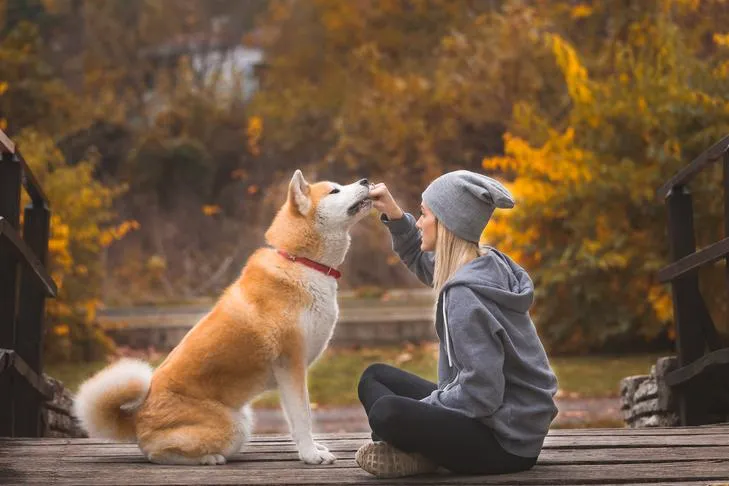Rewarding your dog is essential for successful training. While a tennis ball or playtime can work in some scenarios, food treats often provide the most convenient and effective way to motivate your dog. This guide will help you select the ideal treats for various training situations.
Fast-Eating Treats for Efficient Dog Training
When teaching new behaviors, maintaining your dog’s interest is crucial. One of the best ways to do this is with a high rate of reinforcement. To deliver frequent rewards quickly, choose treats your dog can eat rapidly.
If your dog quickly consumes a treat, you can immediately move on to the next repetition. This keeps them engaged and allows for more practice in less time. However, if your dog takes several seconds to eat each treat, it extends the time between repetitions. This may require longer training sessions, potentially causing your dog to lose focus, or fewer repetitions per session.
The Importance of Small Dog Training Treats
Small treats are vital for maintaining momentum during training sessions. Even for large dogs, a pea-sized treat is sufficient. For smaller breeds, even smaller pieces can be used. Many commercial treats are excessively large. Look for tiny treats, or cut larger ones into smaller portions before starting your training. While it may feel like you’re shortchanging your dog, as long as they enjoy the treat, they won’t mind if it’s a small piece or a whole snack.
 Japanese Akitainu getting a treat from a young woman outdoors in the fall.
Japanese Akitainu getting a treat from a young woman outdoors in the fall.
Smaller treats are also beneficial for your dog’s health. During intense training, such as with puppies or dogs training for specific sports, they may consume many treats daily. Keeping treats small helps control calorie intake. It also prevents your dog from feeling full before the training session concludes.
Soft and Stinky Treats: A Winning Combination for Dog Training
Soft dog treats are excellent for training because they are easier and faster for your dog to eat compared to crunchy treats. Biscuits are suitable for occasional rewards, but during training, waiting for your dog to find every crumb that falls to the floor wastes valuable teaching time.
Soft treats also tend to be smellier, and smell plays a vital role in a dog’s preference. Every dog has a hierarchy of rewards, and most prefer smelly items like cheese or bacon. Kibble might suffice as a reward in a quiet environment, but in more distracting settings, use high-value, smelly treats that your dog loves. The strong aroma can help maintain focus and motivation.
Varying Treat Types to Maintain Interest
Just as dogs have preferred treats, they also appreciate variety. Dogs can become bored with the same old treat. If you notice your dog’s enthusiasm waning, switch to a different reward of equal or greater value. Using several different treats during a session can keep your dog guessing and motivated, as they anticipate the next delicious surprise.
Convenient Treats for On-the-Spot Dog Training
Sometimes, having treats readily available for impromptu training is essential. This could involve reinforcing good behavior around the house, such as lying quietly on a dog bed. In such instances, keeping treats in your pocket or a dog treat bag enables you to provide immediate rewards.
 AKC Canine Retreat CGC
AKC Canine Retreat CGC
Perishable treats like leftover chicken are unsuitable for this purpose. Opt for non-perishable treats that you can easily carry, such as freeze-dried liver or jerky treats cut into small pieces. These are shelf-stable and highly palatable.
Long-Lasting Treats for Specific Situations
In some cases, treats should last as long as possible. Teaching your dog to enjoy their crate, keeping them occupied while you’re away, or encouraging them to lie quietly while you relax are all ideal scenarios for long-lasting treats.
Choose chewy treats like bully sticks that your dog can savor. Alternatively, use dog toys you can stuff with food. A Kong can be filled with cream cheese or peanut butter for a time-consuming treat. You can also seal the end, fill it with broth, and freeze it for a refreshing snack on a hot day.
